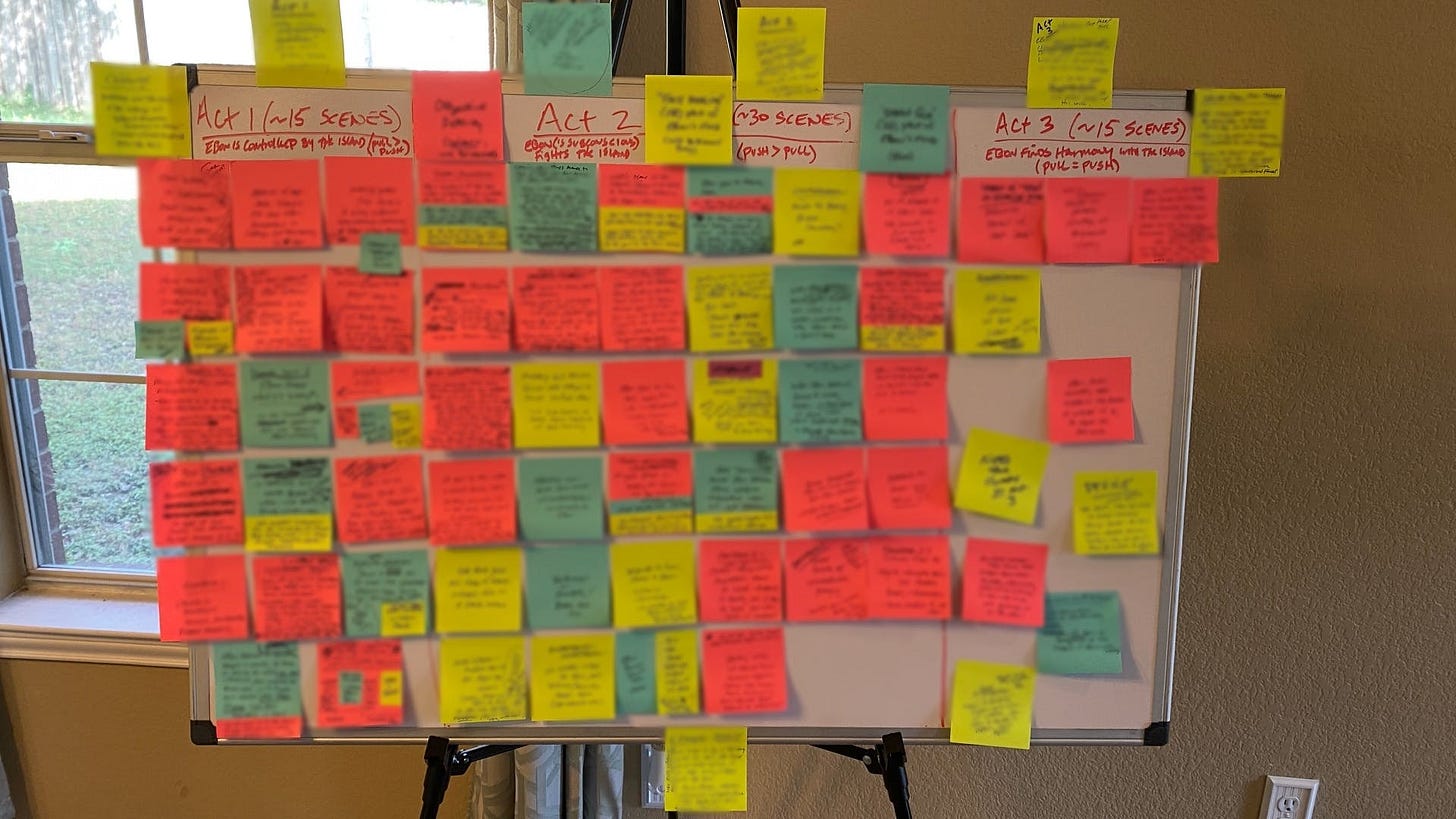I thought you might like a visual peek into a new aspect of my creative process.
But first, a bit of backstory.
You know me as an author, but I’ve mentioned before that my further aspirations are in filmmaking. Specifically, my end goal is to be a writer/director like Darren Aranofsky or Alex Garland. I basically want to direct only films that I’ve written myself, which isn’t true of all (or even most) directors.
(BTW: I’ll always write books, but I want to write and direct films eventually, too.)
I’m starting this process with a big head start over most aspiring filmmakers, which is nice. I’m already an established storyteller, my studio (Sterling & Stone) has a lot of Hollywood connections, and I’ve already sold a TV show (Reginald the Vampire, based on my Fat Vampire books). That will help my chances of making the movies I write … but I do still need to write them first.
I’ve tried a few times to write scripts, but haven’t had much success before now. The scriptwriting process is very different from the way I write books, which is usually to sit down with a rough idea, start typing, and see what happens.
Here’s why it’s different … and, for me, difficult:
Scriptwriting is left-brain at first (when you plan the script’s architecture), then right-brain after that (when you actually write the scenes that fill out that architecture). By contrast, book writing has always been all right-brain for me. Having to do the left-brain analytical thing is weird and uncomfortable, and hard to figure out how to handle.
But I’ve finally had my first success! I haven’t written the actual script yet, but I have successfully outlined one.
(“Writing the outline” might not sound too impressive, but it’s the biggest of hurdles as far as I’m concerned. Writing content is the easy part. But planning a structure from the start? That’s much harder — at least for yours truly.)
For this most recent project (it’s an adaptation of one of Sean’s and my mindjob books), I decided to do the whole “Post-It-Notes-on-all-over-the-place” thing. I know, I know; It’s a cliche. But it worked for me.
I knew roughly what sorts of things might happen, so I started writing those events out as possible scenes on individual Post-Its. Soon those Notes were in long lines on my wall, broken down into the smaller sub-plots that would comprise and support the main plot. Then I started moving things around, eventually moving them into three acts on a whiteboard.
Here’s what things looked like when I finally stopped moving the Post-It-bound scenes around and started writing the outline itself:
What you see above is actually super-organized, relatively speaking. (And yes, it is color-coded. I’m not going to tell you what the colors mean, though.) The third act isn’t filled out (I needed to confer with Sean about that), but Acts 1 and 2 are looking pretty good. The phase before this was a much bigger mess. I had three whiteboards filled with scribbles, a few tens of thousands of words’ worth of possible ideas written out on my laptop, and a zillion Post-It Notes all over my walls. Consolidating them to one board actually felt pretty good. It just took a while.
After the photo above, I restated and elaborated on those Notes in script-outline form, where the gaps all got filled in. The next step is to go through a few revisions of the outline, then write the scenes that comprise the script, polish that through a few rounds … you get the idea.
I’ve never worked this way before, but it was a really interesting experience that I’ve already started to adapt into other types of brainstorming. It’s just felt so … analytical to me in the past. I’m a free-flowing sort of writer, so having to detail things out in this way was very odd to me. But now that I’ve done it once, I think it was pretty cool … and it’s a great first step, allowing me to write more scripts and push myself a few squares closer to “filmmaker” on the big game board of life.



